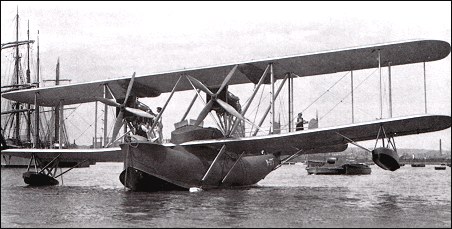|
| Shortly after World War I, Supermarine received two Air Ministry contracts, one in 1921 for a five-seat military seaplane and the other in 1922 for a commercial seaplane, the former named Scylla and the latter Swan. The Scylla emerged as a monoplane, but was apparently converted to triplane configuration in 1923, when it carried out taxi trials at Felixstowe. There is no evidence that it ever flew. The Swan was completed as planned in 1924, but as a maritime reconnaissance flying-boat biplane. After completing its flight trials, it was converted to civilian use.
| CREW | 2 |
| PASSENGERS | 10 |
| ENGINE | 2 x 2 x 450hp Napier Lion IIB engines |
| WEIGHTS |
| Take-off weight | 5820 kg | 12831 lb |
| DIMENSIONS |
| Wingspan | 20.90 m | 69 ft 7 in |
| Length | 17.06 m | 56 ft 12 in |
| Height | 7.95 m | 26 ft 1 in |
| PERFORMANCE |
| Max. speed | 175 km/h | 109 mph |
| Ceiling | 3089 m | 10150 ft |
| Range | 1400 km | 870 miles |
| Anonymous, 14.11.2021 00:08 Although the Swan did not go into production it served as the prototype for the Southampton, which not only went into production but which had long and useful service career with the RAF. reply | | Cornelius den Hartog, e-mail, 06.05.2015 22:41 Good evening, we are interested to further knowledge about Supermarine, in general, and its Swan, in particular. We intend to open a restaurant, to be named "Swan" in the Netherlands, in Rotterdam, which we would care to furnish with subtle, retro-aero-nautical aspects and elements, inspired by this vessel, and we are eager to investigate somewhat deeper. We would love to use photos, articles, and other paraphernalia and memorabilia, and any other story or anecdote. WE welcome your reactions, and extend our warm welcome. Sincerely, C reply |
|
Do you have any comments?
|
| 
COMPANY
PROFILE
All the World's Rotorcraft
|






